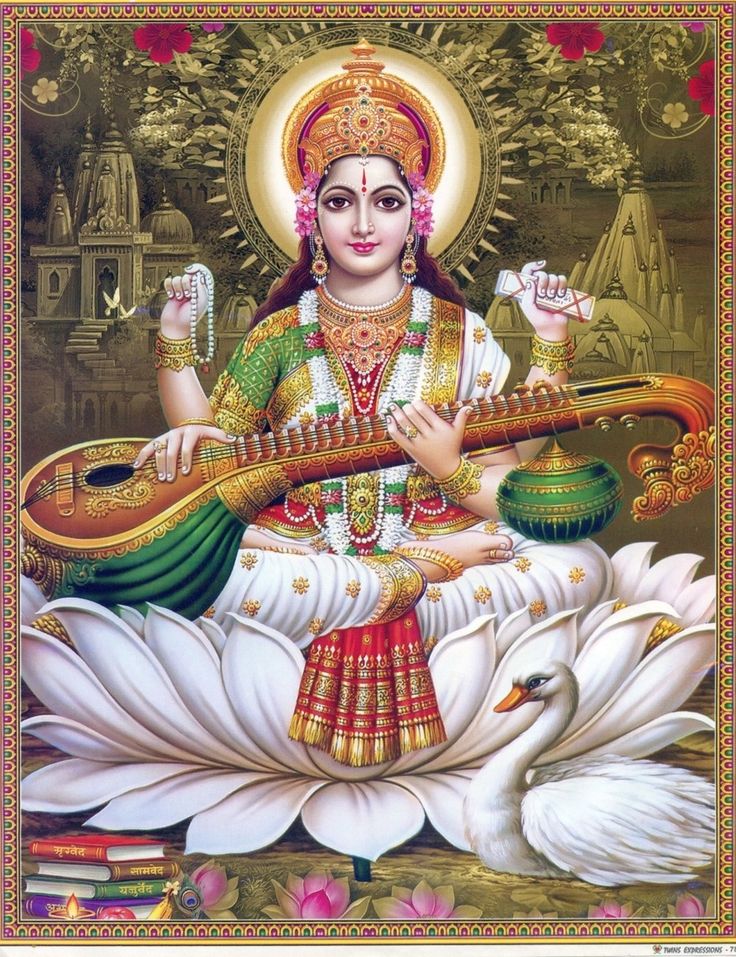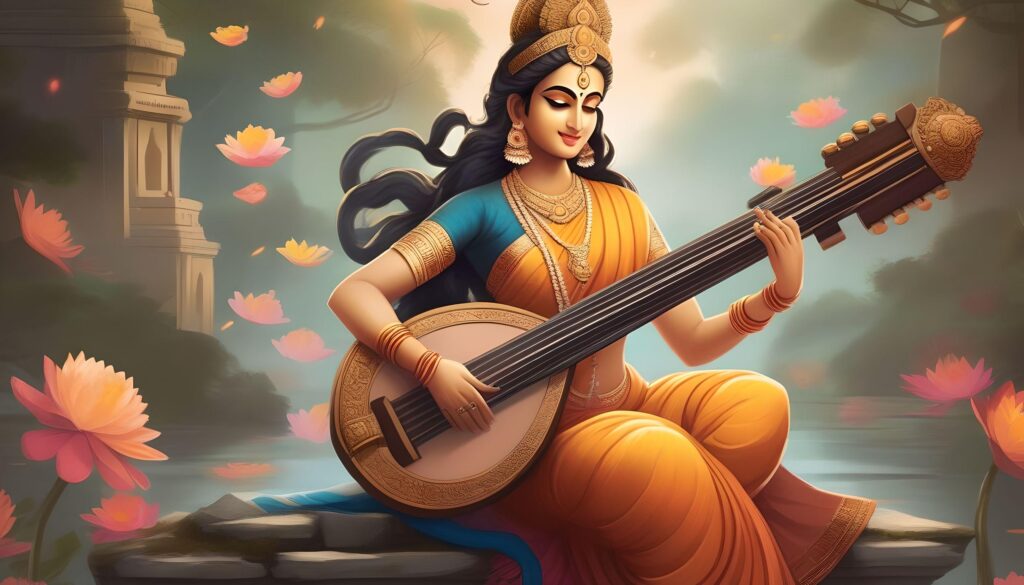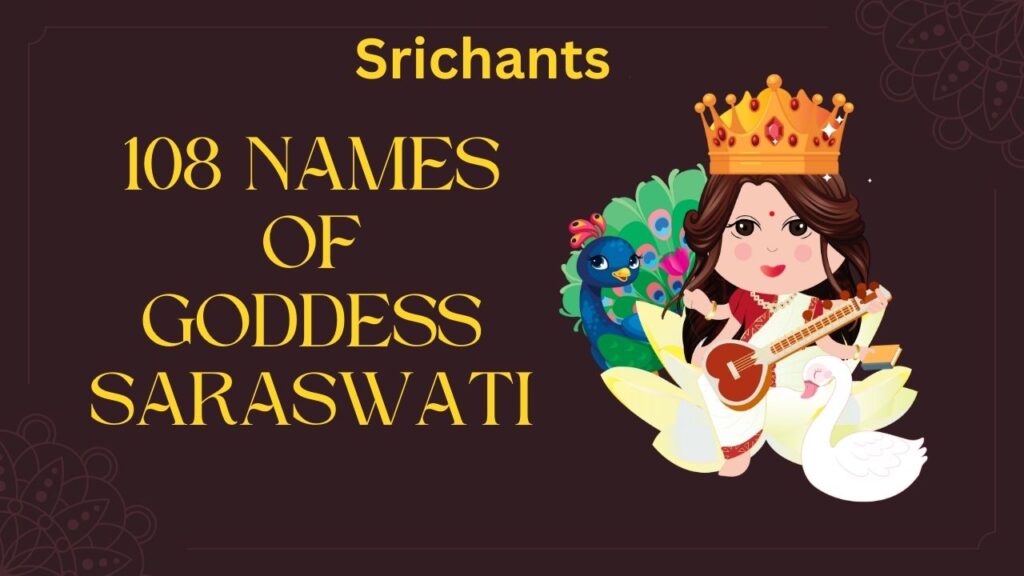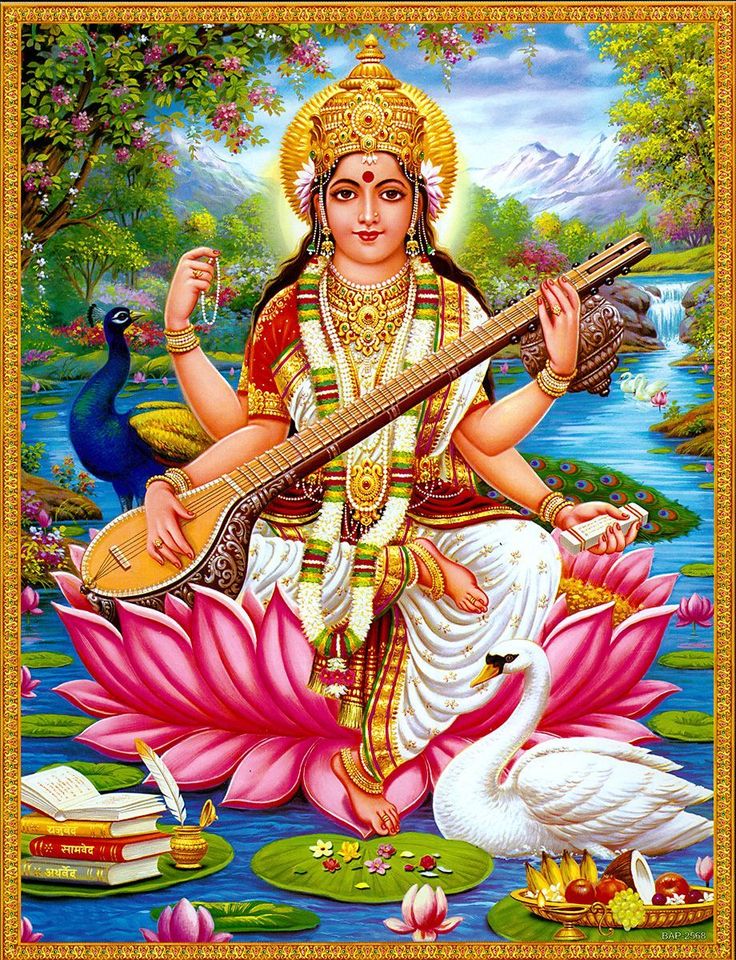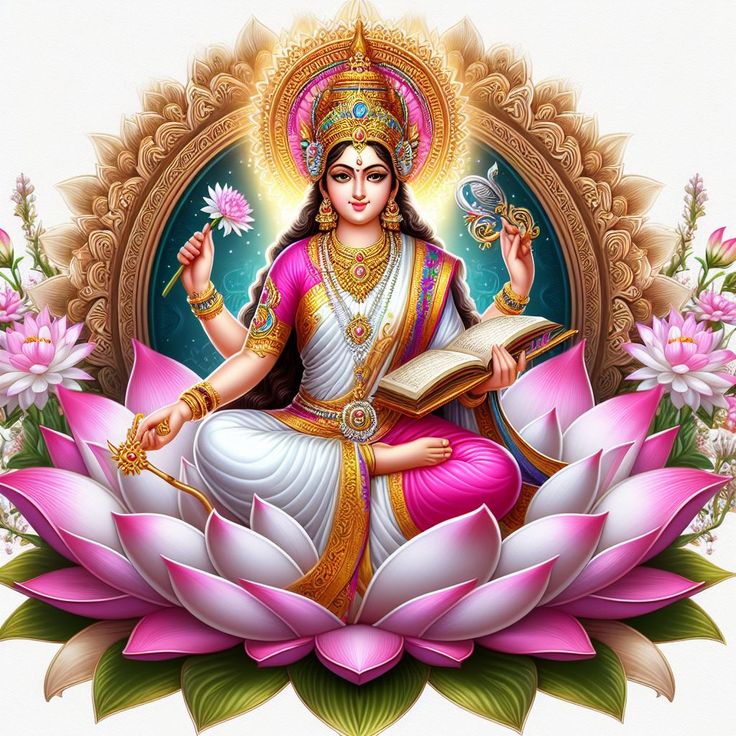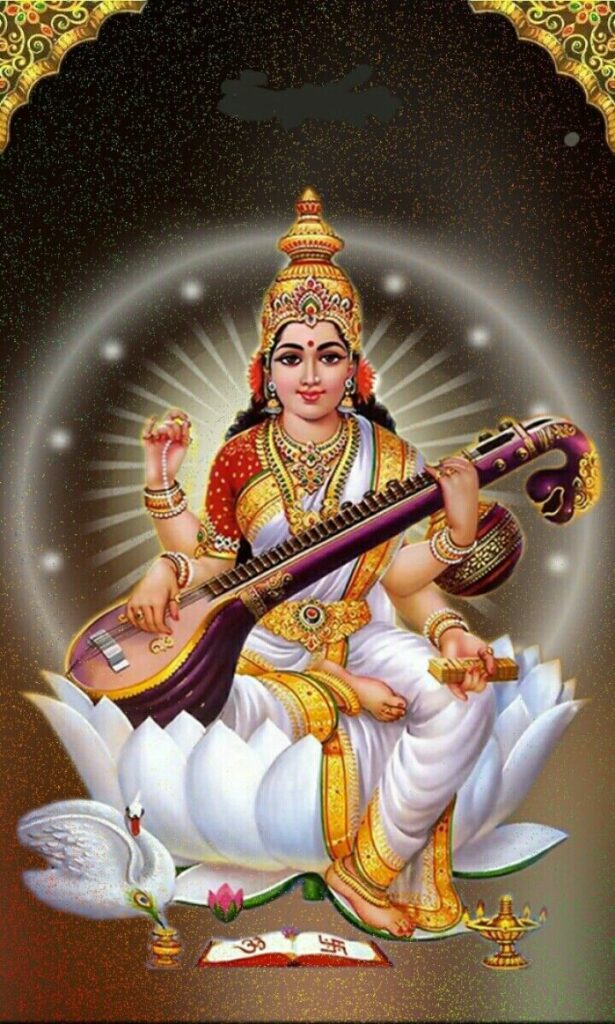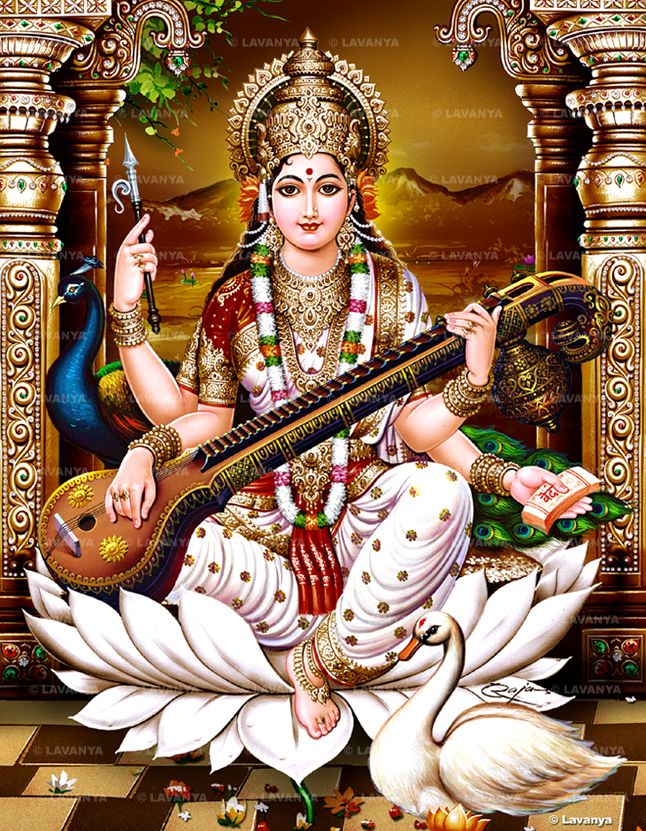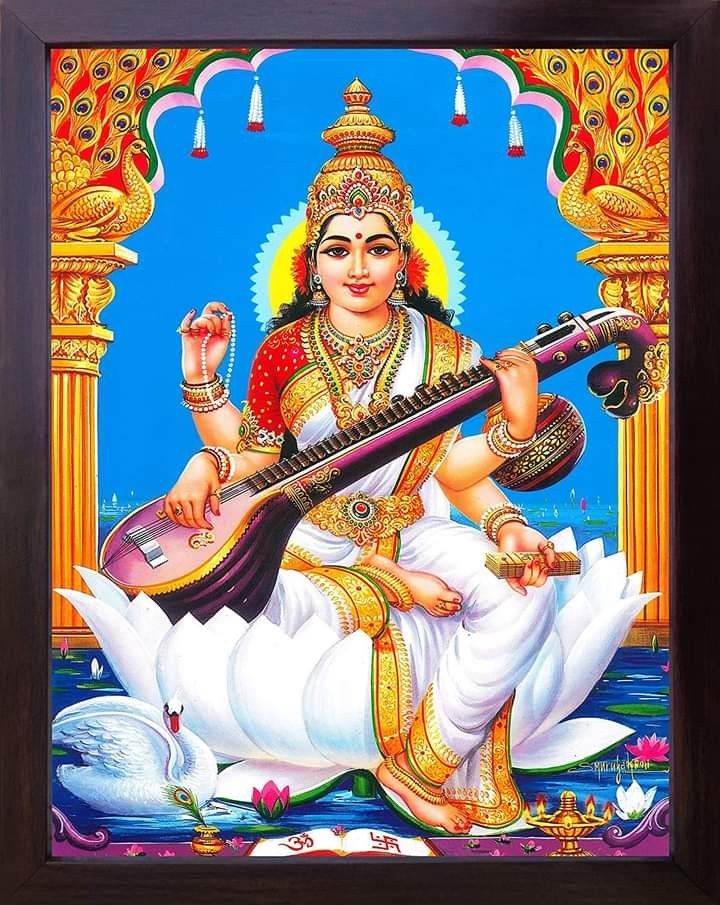Arms : Symbolism of Saraswati’s Four Arms
Introduction
Among the vast tapestry of Hindu mythology, the goddess Saraswati is one of the most adored figures since she embodies the core of knowledge, wisdom, and the arts. Often shown with four arms, her famous portrayal has great symbolic meaning that clarifies her multifarious character and her central importance in the Hindu pantheon.
Examining the symbolism of Saraswati’s four arms reveals a wealth of ideas that not only highlight her divine qualities but also help us to better grasp the respect of the Hindu faith for intellectual and artistic endeavors. From the holy artifacts she keeps to the animals she travels with, every element of Saraswati’s iconography attests to her ongoing importance in the spiritual and cultural terrain of India.
Saraswati: Learning and Wisdom’s Goddess
Core in the theological and cultural fabric of India is Saraswati, the Hindu goddess of knowledge. Reflecting her great connection to the flow of wisdom and the cleansing of the soul, she is sometimes referred to as the “essence of one’s self” or the “one with plenty of water.”
Respected as the creator of language, the sciences, and the arts in the Vedic tradition, Saraswati is the celestial patron of education and intellectual activity. Her significance has only been more apparent over time since her presence permeates not only Hinduism but also Jainism and Buddhism, therefore highlighting her wide cultural influence.
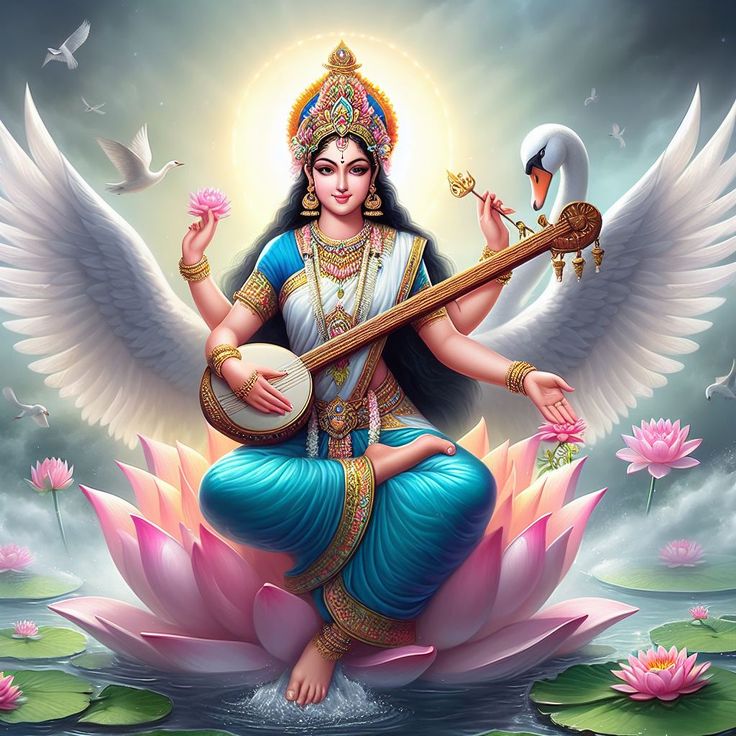
The Meaning of Saraswati’s White Attire
One of the most remarkable aspects of Saraswati’s iconography is her white clothing, with great symbolic value. Representing the Sattva Guna, or purity in the Hindu belief system, white is frequently connected with light, wisdom, and truth, thereby reflecting This white gown serves as a visual depiction of Saraswati’s function as the personification of knowledge, wisdom, and discernment as well as the search of actual wisdom.
Often shown beside Saraswati, the white lotus accentuates this connotation even more. The lotus, a flower rising from the murky waters unspoiled and pure, represents the capacity to keep free from the bad influences that could surround a person. For those who honor Saraswati, this reminds them to keep their intellectual and spiritual integrity even in trying circumstances.
Saraswati’s Four Arms and Their Symbolic Interpretive Conventions
The meaning behind Saraswati’s four arms makes her iconography most fascinating. Every item she carries in these arms stands for a particular attribute of her divine character and the several dimensions of knowledge and creativity.
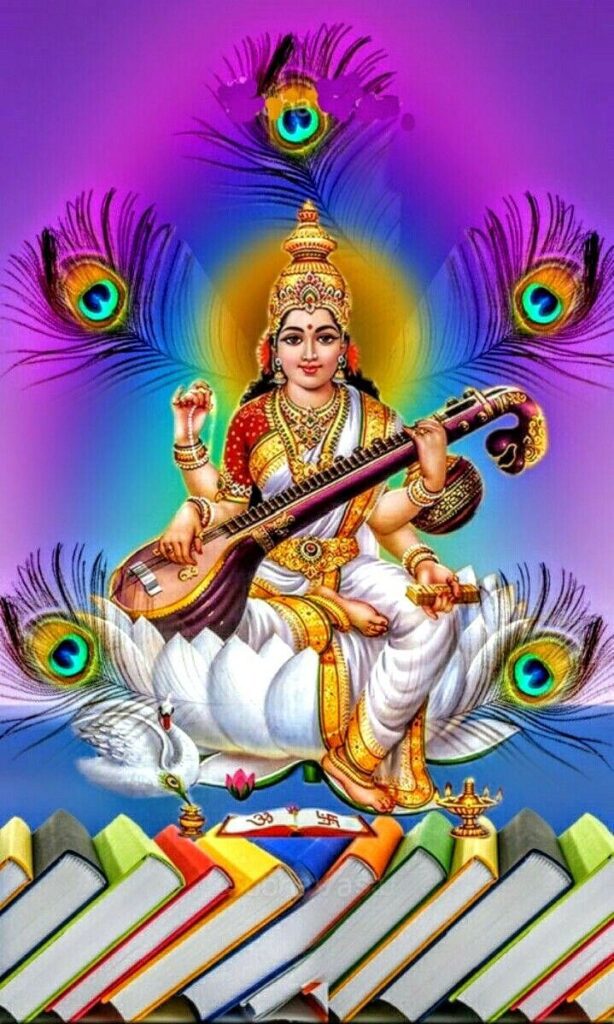
The book or Vedas
Saraswati is usually shown in one of her hands clutching a book or the Vedas, the great Hindu scriptures. This symbolic portrayal highlights the goddess’s responsibility as guardian of global, divine, and timeless knowledge. From the holy to the secular, the book provides evidence of her posture as the living example of all kinds of learning.
The Mala, or Rosary
Held in another of Saraswati’s hands, the rosary, or mala, represents the force of spirituality, meditation, and inward reflection. This holy object stands for the discipline, focus, and loyalty needed to reach actual insight and illumination.
The musical instrument (Veena)
Usually the veena, a string instrument connected with the goddess, Saraswati’s third hand generally carries a musical instrument. This symbolism is for the love of the rhythm of music, which then stands for all the emotions and feelings voiced by means of speech or artistic expression.
The veena is the “jnyana veena,” the emblem of all knowledge, both earthly and spiritual; it is not just any lute. This tool reminds us to “tune” our intellect and mental state to coexist peacefully with the surroundings.
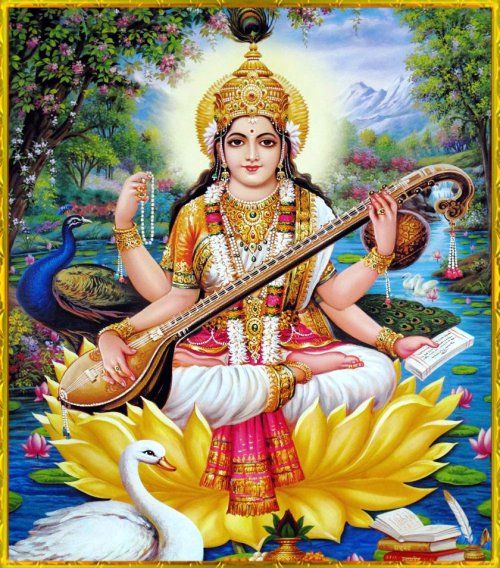
Water Pot
Saraswati’s fourth hand might be a water pot, signifying the sacred nectar of knowledge, or Soma, or the purifying force of water. This symbolic object signifies the goddess’s capacity to distinguish the essence from the inessential, the clean from the filthy, and the good from the wrong.
Saraswati’s Friend: The Hamsa
Accompanying Saraswati, usually close by her feet, is the hamsa, or swan. Hindu mythology regards the hamsa as a holy bird endowed with the special ability to separate milk from water, hence signifying the strength of discernment and the ability to differentiate the permanent from the transitory.
Representing spiritual perfection, transcendence, and the ultimate aim of moksha (freedom), the hamsa—also called the “vehicle”—of Saraswati This divine friend emphasizes even more Saraswati’s function as the goddess of wisdom, helping followers toward the realization of actual knowledge and enlightenment.
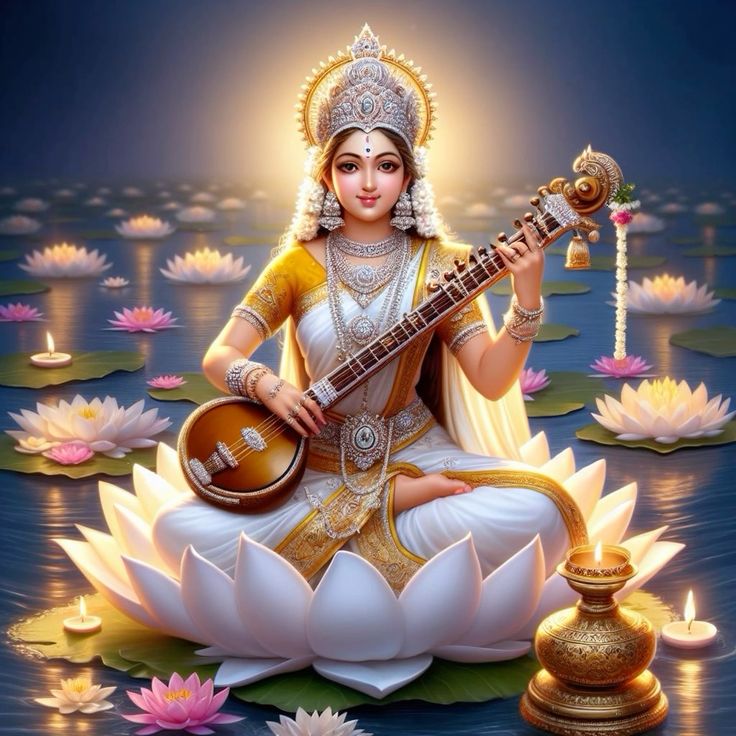
The Peacock: A Metamorphosis and Creativity Symbol
Often seen beside the goddess, the peacock is another famous symbol connected with Saraswati. The peacock represents the celebration of dancing, inventiveness, and the alchemical process of turning the “serpent poison of self” into the brilliant feathers of enlightenment. .
But the peacock also stands for the erratic and flimsy nature of the ego, which has to be conquered to reach actual understanding. For Saraswati’s followers, this duality in the peacock’s symbolism reminds them to strike a balance between their creative energy and the discipline and sensibility needed for spiritual development.
Saraswati’s Connection to the River
Saraswati’s imagery also bears strong connection to the river bearing her name. Vedic literature regarded the Saraswati River as a holy stream and the goddess Saraswati as its personification. This relationship to the river stands for the flow of information, the continual regeneration of understanding, and the mental and spiritual cleansing.
Saraswati’s early background as a river goddess is visually referenced to by her portrayal alongside a flowing river or other body of water, hence underlining her function as the divine guardian of intellectual and artistic activities.
Saraswati and the Aksharabhyasam Customs
In Hindu tradition, a child’s life is much enhanced by the Aksharabhyasam ritual. With the young student being exposed to the first letters or alphabets, usually under the blessings of Saraswati, this event marks the child’s beginning into official education.
Usually “AUM,” or “Om Namah Shivaya,” the youngster sits on the knee of a parent or elder and their hand is guided to write the first letters on a plate or slate loaded with rice grains. This symbolic deed is evidence of Saraswati’s function as the goddess guardian of education; the ceremony helps one to call her blessings for the intellectual and academic activities of the kid.
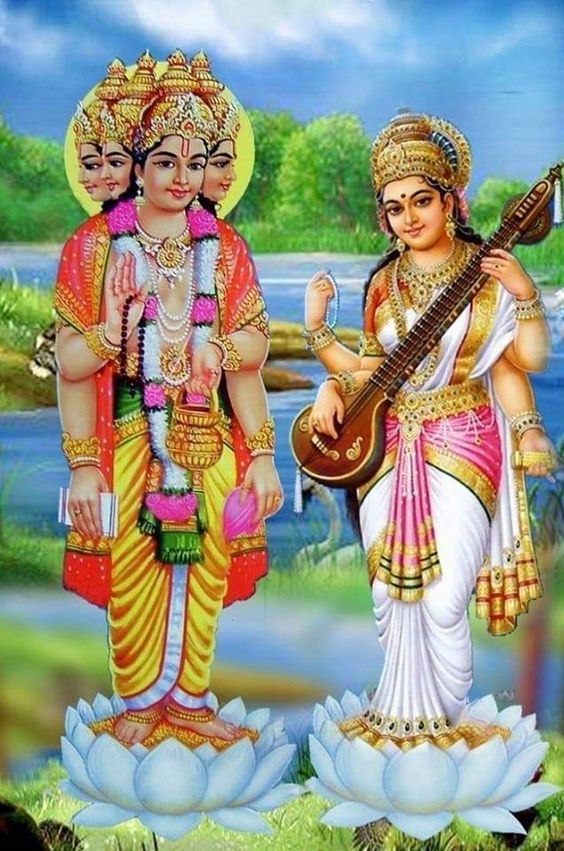
Saraswati’s Effect Outside of Hinduism
Goddess Saraswati is respected in numerous religious traditions including Buddhism and Jainism, hence her influence goes much beyond Hinduism.
Saraswati is the goddess of eloquence and the arts in Buddhism, Benzaiten. Saraswati’s international appeal as a deity connected with knowledge, wisdom, and creative expression is highlighted by this cross-cultural respect of her relevance.
Likewise, in Jainism, Saraswati is revered for her knowledge and artistic sensibility, therefore proving her continuing importance among many spiritual traditions. This great impact emphasizes Saraswati’s role as a uniting person who crosses the lines of different religions and represents the search of knowledge and enlightenment.
Saraswati’s Part in Hindu Creation Stories
Beyond her function as the goddess of wisdom and the arts, Saraswati is central in Hindu mythology. She is also intimately related with the act of creation since she is thought to be the wife of the creator god Brahma.
In this role, Saraswati is regarded as the divine consort who supports Brahma in his creation by lending her knowledge and creative ability to help to mold the planet. This cooperation between Saraswati and Brahma emphasizes the goddess’s central part in the Hindu cosmological story, where she not only represents knowledge but also a major actor in the very act of manifestation.
Conclusion:
Examining the great significance of Goddess Saraswati’s four limbs reveals a multifarious divinity reflecting the deepest hopes of the human spirit. From her white clothing and holy artifacts to her celestial friends and legendary connections, every element of Saraswati’s iconography attests to her continuing importance in the Hindu faith and beyond.
With their symbolic objects, Saraswati’s four arms capture the range and depth of her heavenly qualities. The book or Vedas is the search of universal knowledge; the rosary marks the power of concentration and spiritual discipline; the musical instrument honors the creative arts; the water pot stands for the discernment needed to separate the important from the inessential.
Saraswati, a lighthouse of knowledge, motivates followers to develop their intellectual and creative ability as well as to point them in the direction of spiritual release. Respected and powerful in the tapestry of Hindu mythology and beyond, her eternal message of wisdom, purity, and the harmonic blending of the material and the divine continues to resounds across civilizations and generations.
#arms #Goddess #Saraswati #
